NRAO operates a widely dispersed set of facilities. The original site at Green Bank included the 300-foot transit telescope (below) from 1962 until its collapse in 1988 (heralded as a hostile action by space aliens in one tabloid headline thoughtfully passed along by a colleague). This was also the home of the original 85-foot dish, later joined by two more to form the Green Bank Interferometer (which served, among other things, as a testbed for techniques used in the VLA, and later for astrometric and monitoring programs). The Green Bank site can be seen in this satellite photograph from Google Maps.
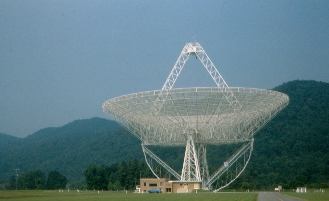 |
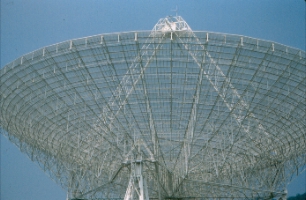 |
At Kitt Peak, the higher altitude was found advantageous for NRAO's first foray into shorter wavelengths, the 12-meter millimeter-wave telescope. This was originally known as the 36-foot telescope, but a refurbishment not only went metric but increased the diameter slightly to a full 12 meters. This instrument is protected by a fabric-over-rib dome, and for some wavelengths they need not open the slit. When they do, the folks at the summit often wish they would turn off the bright red interior lights, since the lights look a little too much like brush fires when seen from the town of Sells, and all those phone calls during fire season sometimes get annoying. The telescope has found most of its use on spectral-line observations, being a major source of data on molecular clouds and star-forming regions (including mass outflows from young stars). After going into operation in 1967, the telescope ceased operation by NRAO in the summer of 2000 (and is currently operating on a 6-month reprieve by a consortium of universities). The NRAO facilities on Kitt Peak, both 12-meter dome and VLBA antenna, are visible in this Google Maps satellite image.
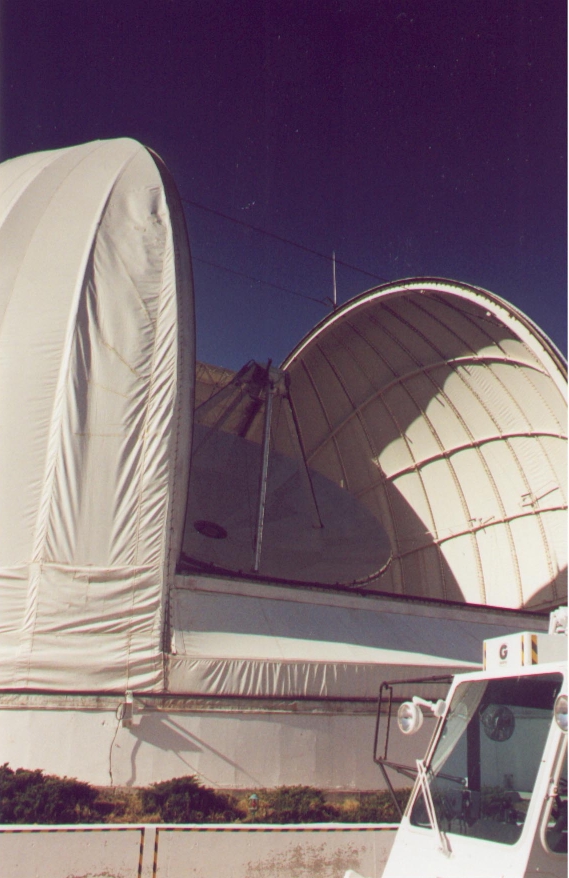 |
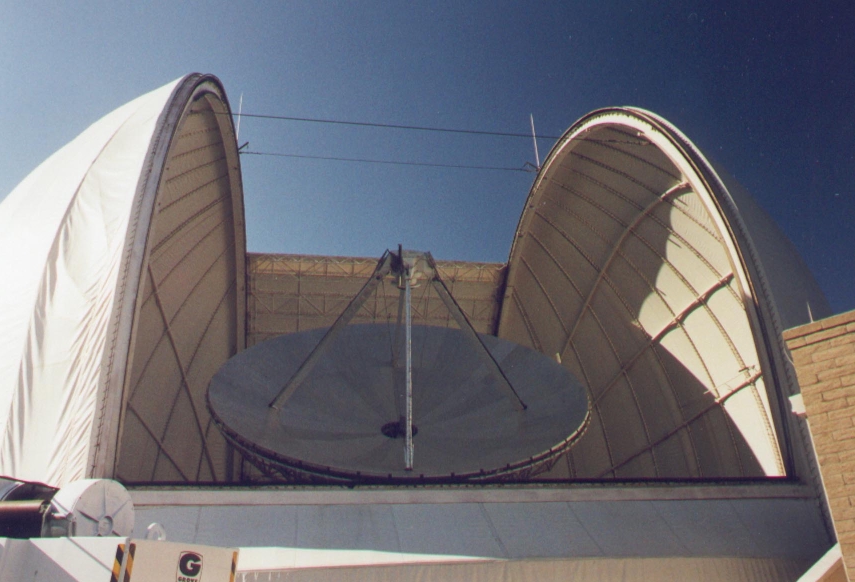 |
One antenna of the Very Long Baseline Array (VLBA) is located nearby on the southwest ridge of Kitt Peak, close to the picnic area. The individual 25-meter dishes look quite similar to those of the VLA, though they are over a decade newer and correspondingly improved in surface accuracy and performance. The installations span the whole US, from Hawaii to the Virgin Islands. This view of the Kitt Peak installation also shows the KPNO 4-meter and Steward 2.3-meter domes near the summit in the background (just under the left edge of the disk support structure). You can also see part of the Cassegrain subreflector used to bring radiation to a focus just behind the center of the main reflector, an arrangement also adopted for the VLA which has advantages in placement and maintenance of receivers and in controlling stray radiation from the ground.
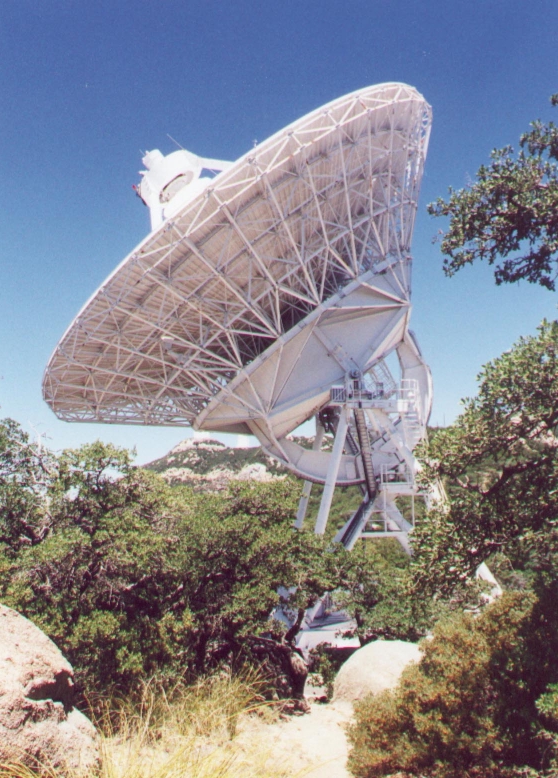
The westernmost extent of the VLBA is marked by an antenna on the slopes of Mauna Kea, protected from much potential interference by cinder cones on three sides.
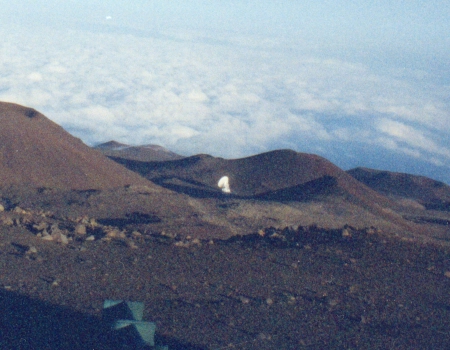
Last changes: 4/2007 © 1999-2007